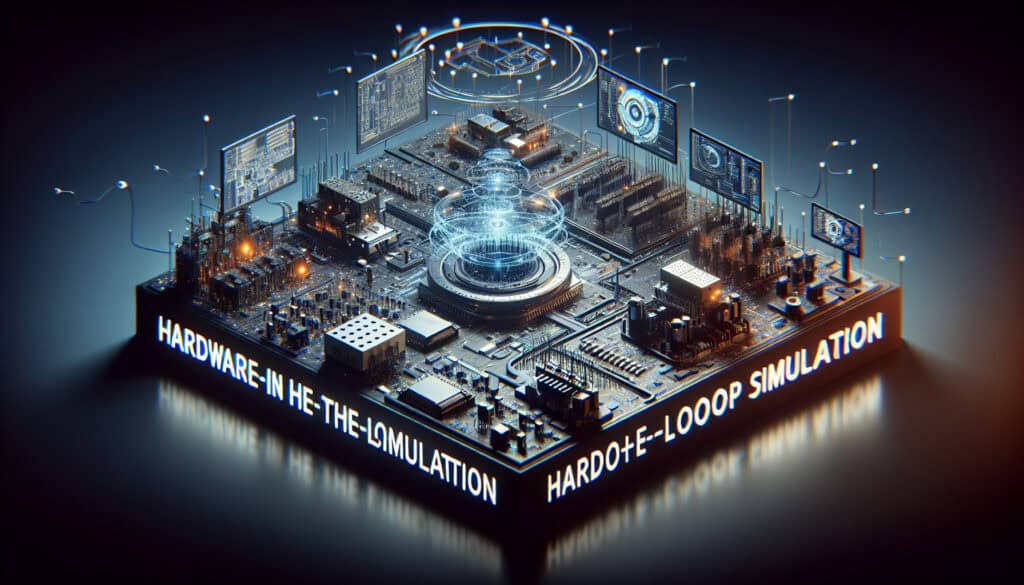To test and validate embedded systems in a virtual environment.
- 方法: 客户与营销
硬件在环仿真

硬件在环仿真
- 汽车, 控制图, 网络物理系统(CPS), 硬件, 风险管理, 模拟, 测试方法, 验证, 验证
目标
如何使用
- A technique where real components are connected to a virtual simulation of the system they are intended to control. This allows for the testing of the complete system in a controlled and repeatable environment before it is built.
优点
- Allows for comprehensive and automated testing; Reduces the risk of damage to expensive hardware.
缺点
- Can be complex and expensive to set up; May not perfectly replicate real-world conditions.
类别
- 工程, 质量
最适合:
- Testing the control system of a new car or airplane before it is built.
Hardware-in-the-Loop (HIL) Simulation finds extensive use across industries such as automotive, aerospace, robotics, and automation, where the interaction between hardware and complex control algorithms must be validated before physical prototypes exist. For instance, in the automotive sector, engineers can utilize HIL to simulate the interaction of a vehicle’s braking system with real sensors and actuators, enabling rigorous testing of control software under various driving conditions. In aerospace, this methodology allows for the evaluation of flight control systems by interfacing with actual actuators and sensors employed in modern aircraft to ensure that safety protocols can be adhered to before real-world testing. HIL Simulation is often initiated during the development phase when control algorithms are being designed, allowing teams composed of software developers, systems engineers, and hardware engineers to collaborate closely, thereby enhancing communication and integration efforts. This rigorous testing environment mitigates risks associated with traditional testing methods, including potential damage to high-value hardware and the significant costs associated with physical prototypes, as it allows for adjustments and iterations to be made in software without risking any actual devices. Furthermore, with the growing complexity of systems requiring real-time response, countless industries now rely on HIL Simulation not only as a testing measure but also as part of their continuous development cycle, where feedback loops and performance metrics can be integrated into the design phase, ensuring that reliability and efficiency are maintained throughout the engineering process.
该方法的关键步骤
- Define system requirements and specifications.
- Select and configure hardware components for the system.
- Develop the virtual model of the system using simulation software.
- Integrate the real hardware components with the virtual simulation environment.
- Implement control algorithms and strategies within the simulation framework.
- Run simulations with various scenarios to assess system performance.
- Analyze the results, focusing on control system behavior and feedback.
- Iterate on the design by modifying algorithms and hardware configurations as needed.
- Verify integration by testing communication between hardware and software.
- Finalize system validation through comprehensive test cases.
专业提示
- Incorporate advanced fault detection algorithms within the simulation, enabling the identification of potential issues under various scenarios and improving reliability analysis.
- Leverage modular hardware integration in your simulation setup, allowing for easy replacement and testing of components, thereby accelerating prototyping cycles.
- Establish a feedback loop between simulation results and hardware modifications, ensuring that learnings from simulated tests directly influence iterative design improvements.
Historical Context
1949
1950
1950
1960
1960
1960
1960
1940
1950
1950
1958
1960
1960
1960
1960
(if date is unknown or not relevant, e.g. "fluid mechanics", a rounded estimation of its notable emergence is provided)















相关文章
肌肉骨骼不适调查表
多变量测试(MVT)
多元回归分析
动作捕捉系统
MoSCoW 方法
情绪中值测试